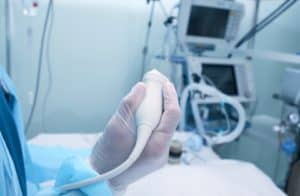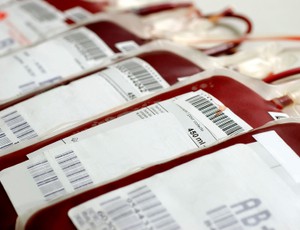Assessing the thrombosis risk of PICC in cancer patients

“The results provide evidence for the practitioner’s early use of the Caprini to assess the thrombotic risk in patients with PICCs” Feng et al (2021).
Bundle approach used to achieve zero CLABSI

“Implementation of evidence-based CLABSI prevention bundle and process monitoring by direct observation led to significant and subsequently sustained improvement in reducing CLABSI rate in adult CICU” Gupta et al (2021).
Benchmarking spikes in demand for hospital transfusion services

“We provide an approach that could be used to benchmark spikes in demand for blood services at hospitals” Walter (2021).
Early complications of totally implantable venous access devices

“implantation of totally implantable venous access devices (TIVADs) by percutaneous venipuncture and management strategies for early complications” Bai et al (2020).
Order of draw during blood sample collection – Full Text

“We aimed to define the efficacy of the order of draw during blood collection to guarantee an exact biochemical result” Bazzano et al (2021).
Silicone PICC fracture and embolization of catheter fragments

“This case highlights the fact that silicon PICCs are fragile and have a high risk of spontaneous dislodgement and should be replaced by better alternative polyurethane PICCs” Joga et al (2021).
Economic evidence that informs vascular access device choice

“This study provided economic evidence that informs vascular access device choice for medium- to long-term chemotherapy” Wang et al (2021).
Biosensor-enabled IV catheter platform for dynamic propofol delivery

“The controller platform is shown to permit autonomous, “closed-loop” delivery of the drug and maintenance of user-defined propofol levels in a dynamic flow model” Chaum and Lindner (2021).
Taurolidine locks to prevent recurrent catheter-related blood stream infections

“The use of long-term taurolidine locks (LTTL) seems to be effective in preventing catheter-related blood stream infections (CRBSI)” Lannoy et al (2021).
Looking at process to improve PICC outcomes – Full Text

“Patients often require central venous access when hospitalised, with more than half of patients in intensive care, and up to 20% in those cared for in the non-intensive care wards” Fakih and Sturm (2021).
Guidewire knot formation with peripherally inserted central catheter

“The formation of guidewire knots during PICC insertion is an extreme rare complication” Saito et al (2020).
Training program to improve cancer drug therapy safety

“An interprofessional education program with online modules, in-person interactive sessions, and simulation activities is a promising strategy to deliver cancer drug safety content to practicing oncology clinicians” Aebersold et al (2021).
Impact of early intravenous fluid therapy on acute pancreatitis

“Early intravenous fluid (IVF) resuscitation is crucial in the management of acute pancreatitis” Di Mauro et al (2021).
Article describes the proper use of elastomeric pumps

“The objective of this work is to evaluate the different means of utilization of elastomeric infusion pumps” Diamantis et al (2020).
Duration of peripheral intravenous catheter patency in children

“This study aimed to compare the impact of saline lock to running a slow continuous infusion to-keep-vein-open (TKVO) on the total time a peripheral intravenous (PIV) catheter remained patent” Thorpe et al (2020).
Hospital-wide initiative to improve infection prevention standards – Full Text

“An academic safety-net hospital leveraged the federally funded state Delivery System Reform Incentive Payment programme to implement a hospital-wide initiative to reduce healthcare-associated infections (HAIs) and improve sepsis care” Sreeramoju et al (2021).
Effect of multimodal interventions on peripheral IV catheter associated infection

“Serious clinical outcomes (e.g. septic shock, localized infection, and infective endocarditis) contribute to the healthcare burden at the individual, health service and national level” Bhatt et al (2021).
Low versus high chloride content IV solutions – Full Text

“Studies have shown complications of normal saline infusion because of its high-chloride content” Song et al (2021).
Novel electroosmotic pump and infusion device design

“The device was fabricated and its applicability has been demonstrated by delivering ∼1.8 mL of water at a 10 ± 2 μLmin-1 flow rate at 2 V constant applied voltage over a period of 3 h” Sreenath et al (2021).
Self-administration outpatient parenteral antimicrobial therapy pathway

“Nurse empowerment within OPAT can lead to significant improvements and patient benefits, while maintaining clinical outcomes” Bodycot et al (2021).
Criteria for sustainable neonatal CLABSI surveillance – Full Text

“The newly developed Dutch neonatal CLABSI SC are concise, specified to the neonatal population and comply with a single blood culture policy in actual neonatal clinical practice” Heijting et al (2021).
Repair of central venous access devices in intestinal failure patients

“Repair of tunnelled CVADs in patients with IF is successful and safe with no increased risk of CRBSI. Significant cost savings may be made” Fletcher et al (2021).
Central venous catheter utilization and complications in infants

“Infants with congenital diaphragmatic hernia (CDH) require multiple invasive interventions carrying inherent risks, including central venous and arterial line placement” Grover et al (2021).
Review of convalescent plasma use in COVID-19 patients

“Convalescent plasma (CP) therapy is rapidly becoming an established consideration in the treatment of COVID-19 patients though there is a need to critically review this area for proof of efficacy” Devarasetti et al (2021).
Post lipid administration flushing for implantable ports

“The aim of the study was to identify appropriate methods of flushing to minimize residual LE when using TIVADs” Okamura et al (2021).
Description of umbilical venous line extravasation – Full Text

“UVC extravasation was suspected, and this was confirmed with contrast injection. The UVC was removed and an improvement in bloods, oxygen requirement and blood glucose was seen within 24 hours” Kamupira et al (2021).
Successful removal of a central venous catheter misplaced in the right subclavian artery

“After the induction of anesthesia, a central venous catheter was unintentionally inserted into the right subclavian artery” Yoshida et al (2021).
The impact of an OPAT clinic for adults with cellulitis

“Implementation of an OPAT clinic significantly reduced return ED visits for cellulitis, but did not reduce hospital admission rates” Yadav et al (2021).
Complication of delayed cardiac tamponade post neonatal PICC insertion

“Three days later, the patient was still on total parenteral nutrition. Cardiac tamponade caused by PICC was found on ultrasound” Cut et al (2021).
The impact of a notched peripheral intravenous catheter on the first attempt success rate

“This study was unable to reach a first attempt success of 90%, although first attempt cannulation success was higher in patients who got a notched needle inserted when compared to those who got a non-notched needle inserted” van Loon et al (2021).

